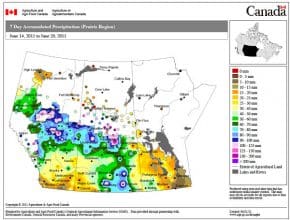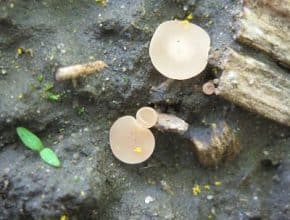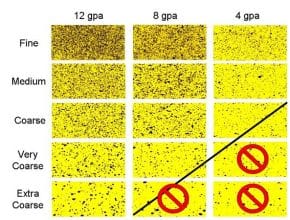Home / Canola Watch / Page 286
-
Peace Region (B.C. and Alberta): Welcome rains of 2” to 5” fell across most of the region early this week. Rains bypassed the northern Peace region and fields in that……
-
Label application windows: Glyphosate: Anytime up to and including the 6-leaf stage of canola. Liberty: Cotyledon stage up to the early bolting stage of canola. Odyssey/Absolute: 2- to 6-leaf stage of canola…
-
Water stress can make canola more susceptible to herbicide damage. Damage can be enough to kill plants under extreme stress. Resist the temptation to increase herbicide rates if the crop is under stress…
-
Growers still have time to top up nitrogen and sulphur to take advantage of higher yield potential. Nitrogen should be applied before the 5-leaf stage to provide a strong economic benefit. Sulphur can be applied up to bolting…
-
Sclerotinia spores will be everywhere this year after widespread infection across the Prairies last year. If fields are moist at the time of flowering, and canola has yield potential of 35 bu./ac. or more, then it will probably pay to spray a fungicide to limit sclerotinia losses. The message this week is to consider the threat and budget for action…
-
Cereal crops in rotation provide canola growers will another opportunity to control cleavers, volunteer canola and other tough weeds to reduce the threat to next year’s canola. Volunteer canola control also reduces build up of clubroot and blackleg inoculum…
-
Flea beetle spraying continues in Manitoba where crops are advancing slowly due to excess rain and limited warmth. Redbacked cutworms are still causing severe damage in southern Alberta. Some sprayed fields need to be reseeded…
-
Cleaning out the sprayer protects a sensitive crop, it protects people working with the sprayer, and it protects the sprayer and its components. The following article by AAFC's Tom Wolf provides some handy tips…
-
Here are a few key tips to lure you in: Spraying at the right time is more important than how you do it. Choose a herbicide that can handle large droplets. Keep your boom low. Read on for more tips and details…



